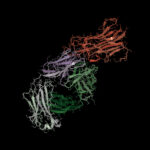 CR845 Opioid in Phase 2 for Acute & Chronic Pain
CR845 Opioid in Phase 2 for Acute & Chronic Pain
CR845—an oral, peripherally selective kappa opioid agonist—is currently in Phase 2 trials for the treatment of pruritus, and acute and chronic pain.1 Eighty patients with hip osteoarthritis (OA) or knee OA were randomized to receive treatment with 0.25 mg, 0.5 mg, 1.0 mg or 5.0 mg CR845 twice daily for two weeks. Safety assessment, pharmacokinetics and drug efficacy were evaluated. Joint pain efficacy was evaluated as a change from baseline in the Numeric Rating Scale and measured daily, and the change from baseline in the Western Ontario and McMaster Universities Osteoarthritis Index (WOMAC), measured at the end of Weeks 1 and 2. Change from baseline in the use of rescue medications and Patient’s Global Assessment was also evaluated.
The mean joint pain score showed a dose-related reduction from baseline: 25% for patients treated with 0.25 mg CR845 and up to 34% for patients treated with 5.0 mg CR845. Half of the patients in this latter group had at least a 30% reduction in their mean pain score and a higher mean reduction in the joint pain score compared with the other treatment groups. In addition, these patients had an 80% decrease in the mean rescue medication use. Fifty-nine percent of these patients had not used rescue medication by Week 2. WOMAC scores were significantly improved in all four treatment groups. The patients treated with 5.0 mg CR845 had a 38% improvement in WOMAC scores compared with baseline.
Olokizumab to Treat RA
Olokizumab (OKZ)—a humanized, anti-interleukin-6 monoclonal antibody—is being developed to treat moderate to severe rheumatoid arthritis (RA).2 The efficacy and safety of OKZ were assessed in 12-week randomized, controlled trials in patients who had previously failed treatment with anti-TNF therapies. In these trials, the primary study objective was to assess the long-term safety of OKZ. The secondary objective was to assess its long-term efficacy using a change from baseline in the Disease Activity Score 28 C-reactive protein (DAS28 [CRP], four variable).
Patents received placebo or 60 mg, 120 mg or 240 mg OKZ subcutaneously every two or four weeks in one study. In the second study, patients received 240 mg OKZ every two weeks or 8 mg/kg tocilizumab intravenously every two weeks. Patients who completed the trials were eligible for an open-label extension, in which all participants received 120 mg OKZ subcutaneously every two weeks plus methotrexate (12.5–25.0 mg a week to Week 12, after which the dose could be decreased).



